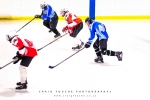

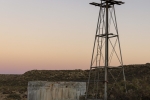
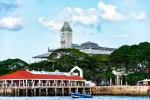

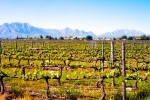
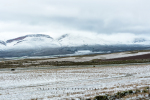



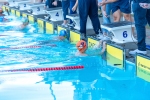
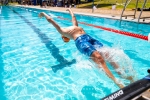
Crazy Daisy puts away her nakedness once a year and dons on her best ballgown of many colours for Spring. She fills the air with her perfume, if only for a while. She intoxicates, dazzles and bewilders us. As quickly as she prepares herself for the ball, so quickly does the evening disappear and she returns to be a Cinderella again, once the flower spectacle is over. She can be an icy cold woman, you also will feel her warmth and allure, and her angry heat too. She will certainly charm you in many ways and have you come back for more!
The Karoo is a sun-seared, harsh and forbidding land. A hard, tough life are the words that spring to mind when confronted with the vast and forbidding landscape of the Hantam and Roggeveld Karoo. Africa is not for sissies they say, this area is a harsh region, one that shapes you and moulds you, and makes you its own. Change is a hard thing for some, the message it sends out is one of embracing me and I will embrace you, ignore me and I will overtake you! This is the way of the Karoo in an unforgiving landscape, the Karoo cannot be tamed.
The towns of this region are Calvinia, Nieuwoudtville and Loeriesfontein; Sutherland and Middlepos respectively, with Calvinia and Sutherland being the major towns of each region. We got to explore three out of the five in our recent trip to this part of the Karoo. This is a good thing, as it leaves us with an excuse to return to this beautiful region again.
For this blog, I am only going to discuss Nieuwoudtville and Calvinia. Sutherland will be dealt with in a separate blog for good reason, as I held a photographic workshop there at Rogge Cloof Sutherland Private Estate.
Nieuwoudtville, locally pronounced ‘Nowtville’, is a tiny village in the Northern Cape province of South-Africa, a place internationally acknowledged as the bulb capital of the world. It really comes to life during the flower season.
The Khoi San inhabited this area for many centuries before the first settlers arrived in about 1730, and local rock art in Oorlogskloof Nature Reserve and on farms around Nieuwoudtville bears witness to an ancient culture that flourished here. During this period vast herds of game periodically roamed the plains of the Bokkeveld Plateau (Antelope Plateau), after which it derived its name. To get the most out of the Bokkeveld, you must take your time, don’t rush along. It is not uncommon to find up to 50 different species within one square metre of Renosterveld! Believe me, it took us over 3 hours to travel 450m, and that was only to photograph flowers!
Approaching Nieuwoudtville one ascends the Vanrhyns Pass on the R27 between Vanrhynsdorp and Nieuwoudtville which was rebuilt in 1962. It carries heavy traffic from Cape Town up to the Bokkeveld Mountains and Calvinia. There are a few lookout points where one can stop along the way to absorb the spectacular view before you reach the summit and is best photographed in the evening. This is one of the ten major mountain passes constructed by the South African road engineer Thomas Bain, linking Nieuwoudtville to Vanrhynsdorp. In the space of 8km, the pass conveys the traveller across the Bokkeveld escarpment into a startlingly different world – from a semi-desert landscape to an arid plateau with trees and grasslands. One will witness the lifeblood veins of green coursing the Knersvlakte valley below, hinting at the existence of subsurface water below.
During springtime, the stretch of road between Vanrhynsdorp and the pass, known as the Knersvlakte, is transformed into a colourful carpet of flowers. The Knersvlakte is a region of hilly terrain covered with quartz gravel in Namaqualand in the north-west corner of the Western Cape Province of South Africa. The name, literally meaning “gnashing or grinding plain” in Afrikaans, is thought to be derived from the crunching of wagon wheels as they moved over the hard quartz stones, or the gnashing of teeth for the hard arduous journey that was required over this terrain. The white quartz gravel reflects more heat than the surrounding regions and one will find endemic succulent leaf plants that are found nowhere else in the world.
The Knersvlakte is Succulent Karoo and dominated by leaf succulents belonging to the Aizoaceae and Crassulaceae, with a variety of shrubs spread amongst them. The climate of the region is semi-arid with long dry summers, and rainfall occurring in the winter months. From the look-out point some 800m above sea level, you will have a sweeping view of the Knersvlakte, the Hardeveld and the Maskam region. The Bokkeveld Mountains contribute to the 180-degree panoramic view, the Bokkeveld Plateau is reached at the top of the pass.
This Knersvlakte region is found north of the Olifants river and the towns are Klawer, Bitterfontein, Vanrhynsdorp and Kliprand.
Evidence of the extensive sheet glacier that covered much of South Africa about 300 million years ago can be seen south of Nieuwoudtville where grooves formed by rocks and pebbles carried in the ice sheet were left behind on the glacial floor after the ice sheet melted. These glacial pavements tend to impede water infiltration and damp patches result, which are favourite habitats for some of the lovely local geophytic plants.
With the arrival of European settlers in the early eighteenth century, the vast herds of wildlife were replaced by herds of sheep and cattle which belonged to the settlers. The settlers established themselves in the well-watered western edge of the Bokkeveld close to the escarpment and the village of Nieuwoudtville was established in 1897 on land that was purchased from H.C. Nieuwoudt – after whom the town was named. People now make their living from sheep, wheat, rooibos tea farming and eco-tourism.
Nieuwoudtville’s public fame started, arguably, with a sheep farmer, the late Neil MacGregor, who on his farm, Glenlyon, took down all internal fences and opened the area to his livestock. The livestock practically ate all the plants and trampled the seeds. He left the diggers, foragers and plant predators, especially the porcupines, to open the earth to rain. He was later rewarded with the flowering of an extraordinary biodiversity on his 6000ha farm. The sheep also flourished, botanists and even Sir David Attenborough came to visit. Tourists have not stopped coming since to view this spectacular event. His farm was later declared the Hantam National Botanical Gardens. The Garden comprises a vast area of over 6000ha which includes representative patches of Nieuwoudtville Shale Renosterveld, Nieuwoudtville-Roggeveld Dolorite Renosterveld and Hantam Succulent Karoo. Nine different trails can be followed covering the variety of habitats and soil types which make this Garden so unique and different.
Namaqualand is the home to the richest bulb flora of any arid region in the world and more than a 1000 of its estimated 4000 plant species are found nowhere else on earth!
It is so true when we read in the Scriptures and we see this flowering spectacle, how can we not say:
Glenlyon was sold to SANBI in 2007 and has now become the ninth National Botanical Garden managed by SANBI.
The kokerboom in Afrikaans, quiver tree in English or choje to the traditional San peoples of Southern Africa, belongs to the group of plants known collectively as aloes. Both the Afrikaans and the English names are derived from the San people’s practice of making quivers from the branches of the trees. It was a practice diarised by then Governor of the Cape, Simon van der Stel in 1685 while on an expedition searching for copper in the Northern Cape. Nieuwoudtville sports the largest Kokerboom Forest in the Southern Hemisphere.
This tree is essentially an aloe plant reaching up to 9m tall and 1m in diameter at the base, it is thought that they can live between 80 and 300 years. It takes about 3 years for the kokerboom to reach 5cm, another 15 to 20 years to reach flowering maturity at about a meter. It is rather obvious that these desert giants are slow growers. The existence of a naturally occurring forest with hundreds of adult trees at 3 metres plus, is therefore truly a sight to behold! The slow rate of growth has its downside and these plants are extremely vulnerable to various vegetation predators, birds and climatic changes.
To find the forest, you travel north on the R357, past the 90m high Nieuwoudtville waterfall (which currently has an entry fee of R30 pp if you wish to visit before 17h00) on the Doorn River, you arrive at a turnoff to Gannabos farm. You will find the Nieuwoudtville waterfall, decidedly underrated despite it being one of the most beautiful waterfalls in the country. I was impressed by the sheer size of the waterfall, and the gorge that it tumbles into, even although it wasn’t in full flow at the time of our visit.
On our previous visit to the Kokerboom Forest, the small bushes were in full purple glory, these being the Ruschia caroli of Rushia extensa, the local name in Afrikaans is the Beesvygie, and the Quiver Trees in yellow bloom. What a stark contrast this time, flowers everywhere else and in abundance in the district, but nothing here! Here, again the stark rawness and harshness of the Karoo reminded us that this is a tough region to survive in. In spite of that, I was not disappointed as I preplanned an evening shoot which went on little further into the night and included some star trails.
I also shot my new Shen Hao 4×5 large format camera here for the first time, this was a learning curve for me as it is slow, methodical and time-consuming to have all the ticks in the boxes completed before you fire the shot. It is so different from the normal 35mm format in many regards, I am however happy with the results and will be using it more often for various shoots that I have planned.
If you don’t know what this camera is about, think of the black-cape-over-the-camera and photographer in 1910 and wet plate glass images, except this is film and the results speak for themselves! I will let you decide and it would be great to have your feedback in the comments below.
It is not all flower power in Nieuwoudtville, pedal power is the name of the game here too! Hosted on Brandkop Farm since 2015 by Nieuwoudtville Akademie, a small private school in town. The first and only one of its kind in the area, a professionally organised event with challenging tracks for the cyclists, high prize money for the winners, attract riders from both near and far alike. The 28th August 2018 saw the Hantam MTB Challenge offering a choice of either 20, 40 or 80km in the saddle on a MTB, a tantalising ride that I have not done yet!
Whether you looking for peace and quiet, this is the place to do just that! Other activities like photography, local sandstone ruins, the glacial pavement, the Oorlogskloof Nature Reserve and a myriad of activities that include bird watching, hiking and a lot of star gazing (light pollution in Nieuwoudtville is minimal) are some of the attractions to this region. Also visit the small towns of Loeriesfontein, for the windmill museum, and Calvinia.
Is that just a dot on the map you may ask, or perhaps you have heard it mentioned on the weather forecast? Or is that a platteland dorpie somewhere in the Karoo?
This was our first visit to Calvinia on a going-nowhere-slowly drive in search of more flowers from the region.
Calvinia is the principal town of the Hantam Karoo and lies at the crossroads to a number of towns and villages scattered across the wide open spaces of Bushmanland and the Tankwa, Roggeveld and Hantam Karoo. It is pleasantly situated and is dominated by the high ramparts of the Hantam Mountains to the north and surrounded by hills and mountains such as the 1 657-metre high Rebunieberg and the Keiskeiberge to the south. The town lies on the banks of the erratically flowing Oorlogskloof River over which one will cross a few times on the R27.
It was founded in 1845 on the farm Hoogekraal which was purchased by the Dutch Reformed Church in order to establish a parish for the far-flung community of the Hantam Karoo. The original name of the region and the village was Hantam. The name Hantam has its origins with the Khoi people and it is believed that the name refers to “the hill where the red nut sedge grows”.
The town features a number of fine Victorian and Edwardian era buildings. I was pleasantly surprised at how neat and tidy it is. One of the oddities of the town is the giant post box, which was converted from a water tower in 1995 and is probably the largest post box in the world, which measures 6.17m high and has a circumference of 9.42m.
Calvinia was the terminus of the branch railway line running from Hutchinson through Carnarvon and Williston, which was completed in 1917. For many years the railway was the primary conduit for the transportation of agricultural products from this remote corner of South Africa to the main railway network linking Johannesburg and Cape Town. Sadly, so many of these little towns in the Karoo have declined since their lifeblood of the South African Railways gave way to goods trucks.
We were a week too early for the annual Hantam Meat Festival, this is sheep country, and the last weekend in August in and around Calvinia, everything is in an uproar when the annual Hantam Meat Festival takes place.
This year, it was already the 29th time that the festival had been run and its main purpose is still, as when it started in 1990, to promote the delicious, fragrant mutton of the region. Definitely a highlight on the calendar. Lovers of mutton and lamb will enjoy a wide variety of different cuts of meat, prepared in different ways, and all in “tasting” portions to enable more tasting. Your taste buds will experience meat braaied, stewed, curried, in pita, on sosaties, in potjies – you can even pick up a done-to-perfection sheep’s head! !
Besides eating your fill of your favourite meat there are numerous demonstrations, farm products for sale and somewhere to have a coffee and take a break. In true Karoo fashion, there is all sorts of entertainment and things to do.
The best way to explore the region is to get in your car and find a base to work from. Head out to the next town, tune into an unfamiliar radio station, meet and speak to the locals either next to the roadside or interact with them at the local general dealer or ko-op. Get to feel and experience the soul of region and the Karoo. The Karoo to many, maybe a sparse and empty place, to me, its a place of discoveries and memories waiting to happen and no doubt, we will return again to enjoy this very special region. So many discoveries, so little time!
Resource information found at the following websites: Karoospace, Nieuwoudtville, Africa Geographic, SANBI, The Great Karoo, SA Venues.
Click on the images to view an enlarged single image.
All my images are available for purchase as prints. Digital images can be used under license agreement. Should you wish to purchase or license my images, please click here for more information, so I can assist you with your needs.
Please subscribe to my free monthly NO-SPAM newsletter which will inform you of any new workshops, activities, products and upcoming events.
SUBSCRIBEI am a Western Cape Winelands photographer based in South Africa, photographing locally and internationally. I am a registered NPS (Nikon Professional Services) member, a contributor to Nikon South Africa's social media pages and website. I photograph a broad variety of genres, using film - 35mm, 120, 127 and 4x5" 4x10, 5x7" & 8x10" format as well as digital medium and are very passionate about my work.
My work has been published in various South African newspapers and magazines including Atlantic Gull Magazine with a cover, SA4x4, HIGH LIFE (British Airways Magazine), Getaway Magazine, Wildside Magazine and Weg!/go! Magazine. I finished as a Top Ten finalist in the 2016 Getaway Magazine Gallery Competition, finishing with Highly Commended. The South-African national news broadcaster eNCA has also made use of video footage that I have produced.
Please feel free to comment and share. You can also click on the social media buttons in the footer below and see what I am currently doing, or sign up for my newsletter and follow me.
Until next time, thanks for your support, appreciating my work and reading my blogs.
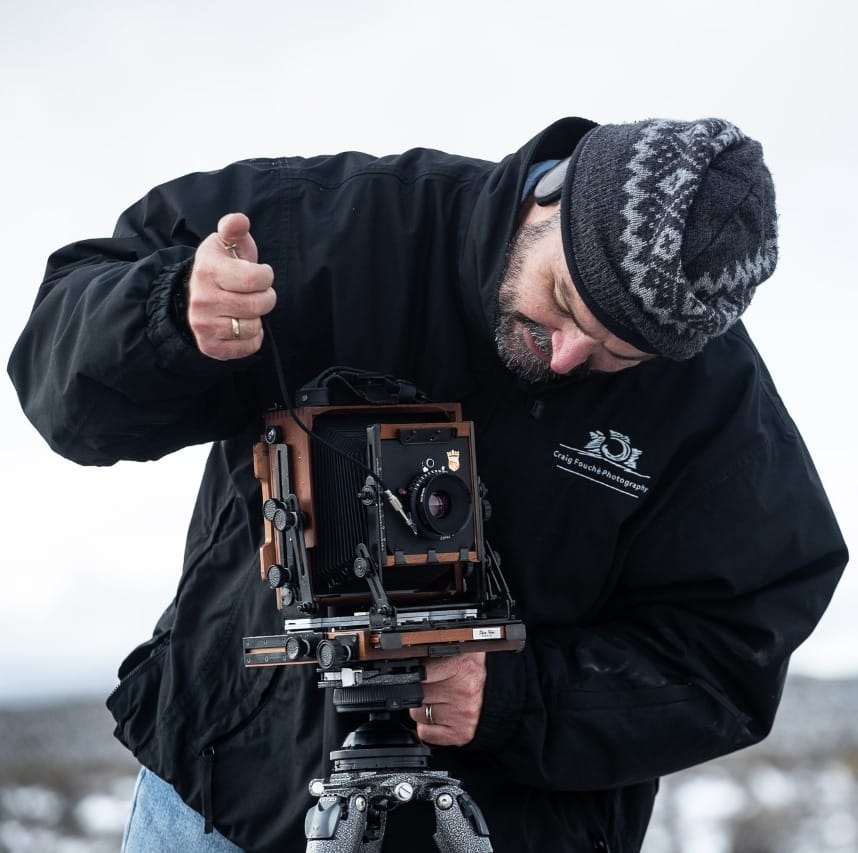
Craig Fouché, Rogge Cloof, Sutherland, South-Africa ©2020 Kirsten Frost Photography